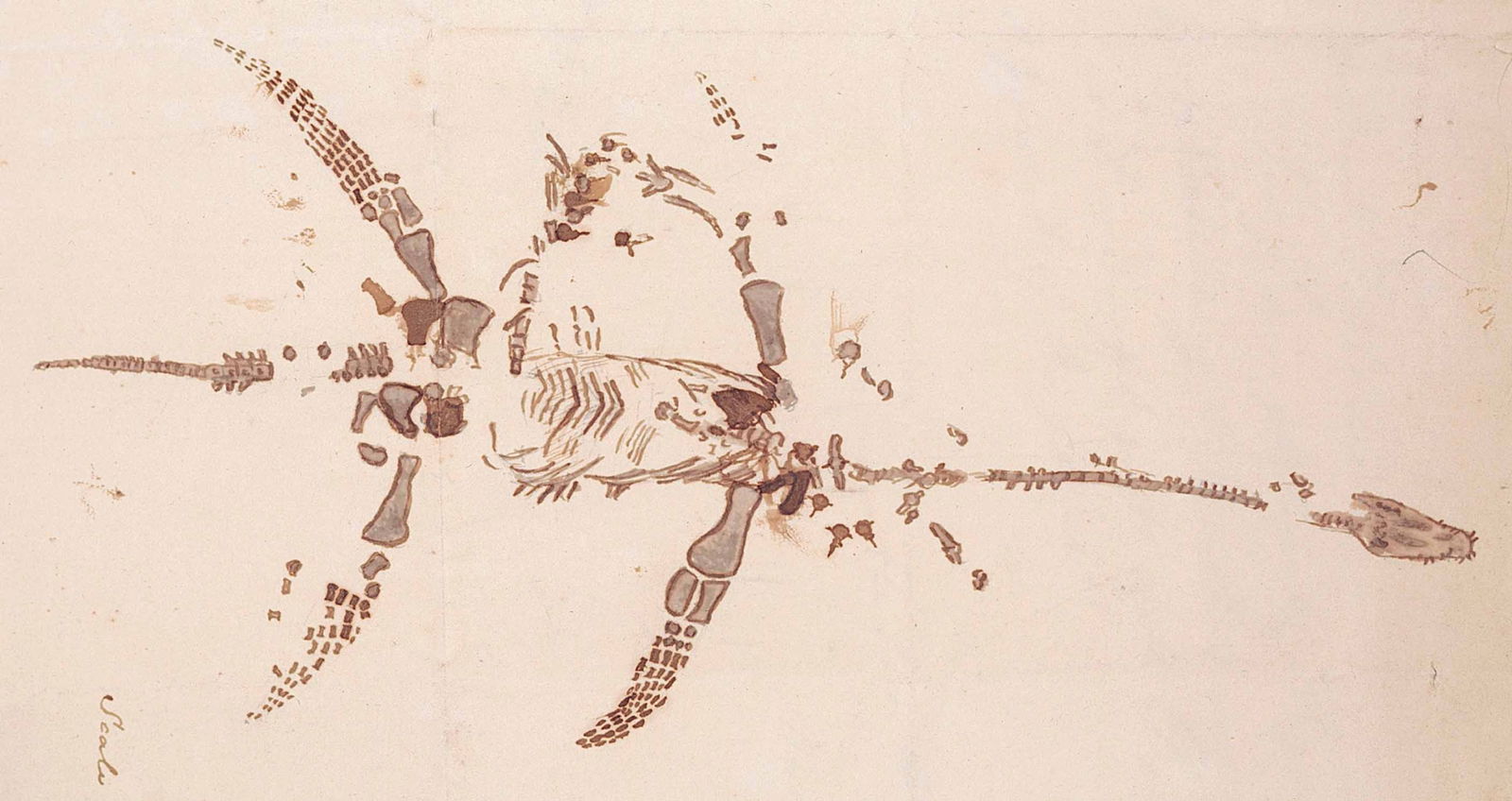The Birth of Mary Anning
Paleontologist and fossil hunter Mary Anning was born on 21 May 1799.

After the death of her father when she was 11, Mary Anning and her brother Joseph took to collecting fossils from the crumbling cliffs at Lyme Regis as a way of supplementing their income. Their first major discovery, in 1811, was an ichthyosaur, for which a local collector paid the family £23.
Anning went on to make several major discoveries, despite the dangers (she nearly died during a cliff fall in 1833, which killed her dog Tray). She determined that belemnite fossils contained fossilised ink sacs, suggesting they came from cephalopods. These sacs she ground up to make ink, which she used to draw fossils.
Her discovery of the first known plesiosaur skeletons led the anatomist Baron Georges Cuvier in Paris to accuse her of fraud. In an era when it was still believed that extinctions implied that God’s creation was imperfect, her discovery of such strange creatures, which had never been seen alive, was highly contentious. Her successful defence of the discovery enhanced her reputation, but, despite her fame, as a woman she was not eligible to join the Geological Society of London.
By 1847 rumours spread that Anning was drinking. In fact she was taking laudanum to cope with breast cancer. She died later that year.
In 2010, the Royal Society included Anning in a list of the ten British women who have most influenced the history of science.




